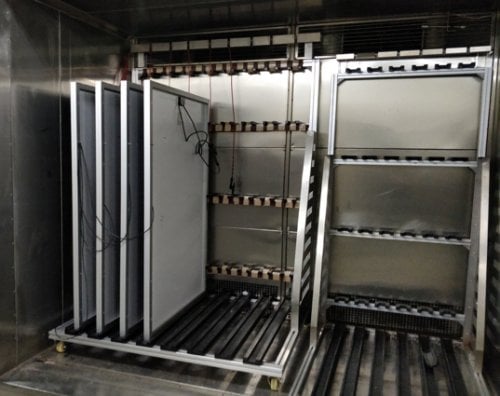I-V Measurement Testing for Solar Modules
Perform I-V measurement Testing on solar modules at our Accredited PV Laboratory.
What is the I-V measurement test?
I-V measurement testing shows maximum power (Pmax), which is a performance parameter. This test is performed several times before and after the various environmental tests, after visual inspection.
What is an I-V curve?
Solar Cell I-V characteristic Curves show the current and voltage (I-V) for a specific PV cell, module or array, therefore giving detailed description of its solar energy conversion efficiency and capability which is critical in defining the device’s optimum performance. Different measurements can be used to determine the performance of the solar cell, such as the output power and conversion efficiency. A typical solar cell's I-V characteristics curve produces a relationship between I and V which summarizes the main electrical properties of a PV cell or module.
The intensity of the solar radiation –insolation - striking the cell controls the current ( I ), while the temperature increases of the solar cell reduces the voltage ( V ). The current-voltage (I-V) curve is generated during the flash test of a solar panel and depicts in a chart the relationship between electrical current intensity (I) and voltage (V).
I-V measurement standards
Although the standard allows to perform the test at a range of cell temperatures (25ºC to 50ºC) and irradiance levels (700 W/m2 to 1,100 W/m2), it is common practice to perform it at the standard test conditions (STC), which corresponds to: 1000 W/m2, 25ºC cell temperature, with a reference solar spectral irradiance called Air Mass 1.5 (AM1.5).
IEC 61215 and IEC 61646 set several requirements for the accurate measurement of temperature, voltage, current, and irradiance.
In IEC 61215, it requires repeatability for the power measurement to be in the range of ±1 percent.


